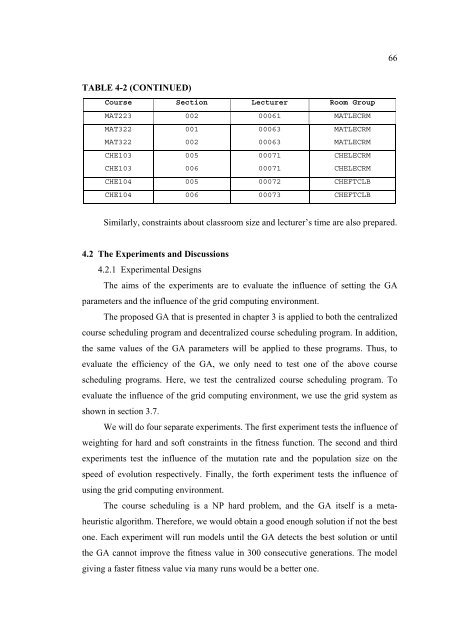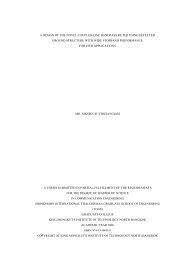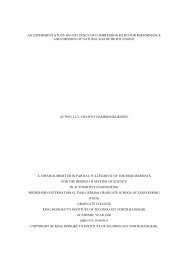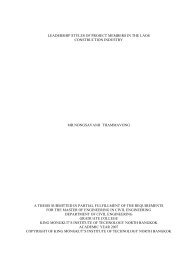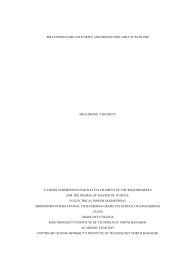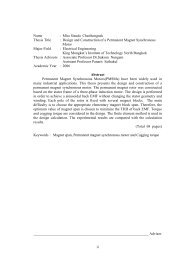a multi-objective bisexual reproduction genetic algorithm for ...
a multi-objective bisexual reproduction genetic algorithm for ...
a multi-objective bisexual reproduction genetic algorithm for ...
You also want an ePaper? Increase the reach of your titles
YUMPU automatically turns print PDFs into web optimized ePapers that Google loves.
66<br />
TABLE 4-2 (CONTINUED)<br />
Course Section Lecturer Room Group<br />
MAT223 002 00061 MATLECRM<br />
MAT322<br />
MAT322<br />
001<br />
002<br />
00063<br />
00063<br />
MATLECRM<br />
MATLECRM<br />
CHE103<br />
CHE103<br />
005<br />
006<br />
00071<br />
00071<br />
CHELECRM<br />
CHELECRM<br />
CHE104 005 00072 CHEFTCLB<br />
CHE104 006 00073 CHEFTCLB<br />
Similarly, constraints about classroom size and lecturer’s time are also prepared.<br />
4.2 The Experiments and Discussions<br />
4.2.1 Experimental Designs<br />
The aims of the experiments are to evaluate the influence of setting the GA<br />
parameters and the influence of the grid computing environment.<br />
The proposed GA that is presented in chapter 3 is applied to both the centralized<br />
course scheduling program and decentralized course scheduling program. In addition,<br />
the same values of the GA parameters will be applied to these programs. Thus, to<br />
evaluate the efficiency of the GA, we only need to test one of the above course<br />
scheduling programs. Here, we test the centralized course scheduling program. To<br />
evaluate the influence of the grid computing environment, we use the grid system as<br />
shown in section 3.7.<br />
We will do four separate experiments. The first experiment tests the influence of<br />
weighting <strong>for</strong> hard and soft constraints in the fitness function. The second and third<br />
experiments test the influence of the mutation rate and the population size on the<br />
speed of evolution respectively. Finally, the <strong>for</strong>th experiment tests the influence of<br />
using the grid computing environment.<br />
The course scheduling is a NP hard problem, and the GA itself is a metaheuristic<br />
<strong>algorithm</strong>. There<strong>for</strong>e, we would obtain a good enough solution if not the best<br />
one. Each experiment will run models until the GA detects the best solution or until<br />
the GA cannot improve the fitness value in 300 consecutive generations. The model<br />
giving a faster fitness value via many runs would be a better one.


